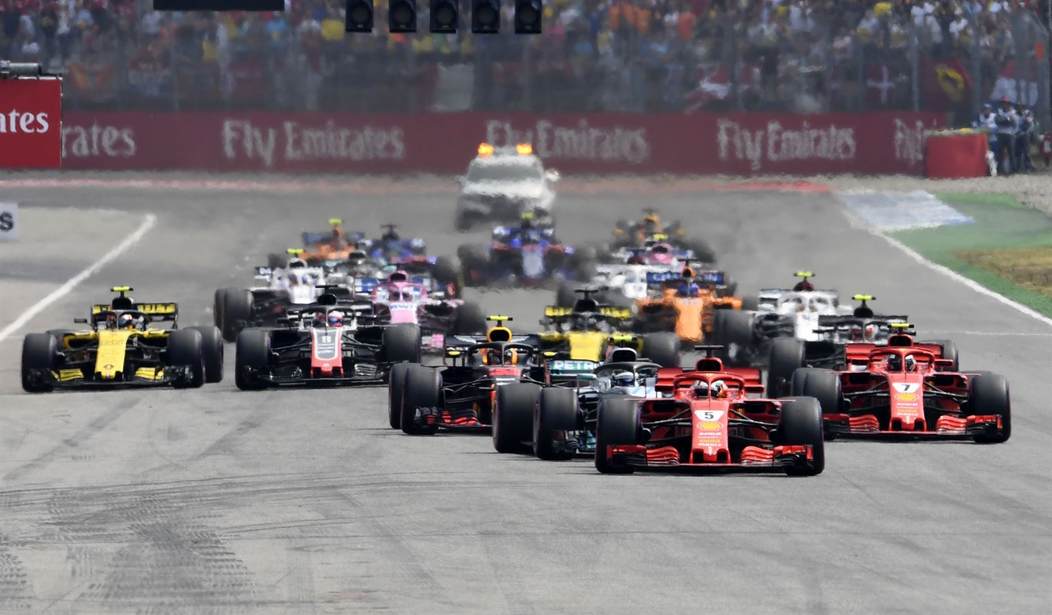I’m a little late to the Netflix Documentary Series “Formula 1: Drive To Survive,” which dropped its third season of episodes back on March 18. The third season covers the 2020 F1 Grand Prix racing series which was shortened from a schedule of 23 planned races down to 17 because of the COVID-19 pandemic.
Season One had premiered in March 2019, and detailed the 2018 racing season, with Season Two premiering in March 2020, chronicling the 2019 season.
Each season is ten episodes in length, with each episode having a running time of approximately only 40 minutes, and each season’s premier has been timed to hit Netflix just ahead of the first Grand Prix race of the season. This past Sunday was the first race of the 2021 racing season which took place in Bahrain.
I have been a fan of various forms of motorsports for 40+ years but cannot say I’ve been a dedicated fan of any one particular form for any extended length of time. At times over my adult life, I have followed Formula One racing, but I probably have watched only a handful of races in the past 20 years — until I found the Netflix series simply as a result of a mention of how good it was in a podcast that I listen to on a regular basis during my morning drive. That was 2 weeks ago, and I watched all 30 episodes since.
If you are completely unaware of what Formula One is, it is a privately owned racing series that stages between 22 and 25 races each year at venues around the world, and at the end of the series, it crowns a Constructor’s Champion and a Driver’s Champion. Many of the racing teams are connected to some of the most famous automotive brands in sports and sports car manufacturing — Ferrari, Mercedes, Renault, McClaren, Aston Martin, and Alfa Romeo all are “Constructors” in this year’s series.
Another big name in F1 racing over the past decade is Red Bull, which sponsors two teams in the top Grand Prix series, Red Bull Racing, and Alpha Tauri Racing.
There is one US-based team — Haas Racing — owned principally by Gene Haas who also has ownership interests in a NASCAR racing team.
The Netflix series has a very entertaining mix of 3 components in each episode — a focus on usually one driver, a focus on a team through the racing director or “Team Principal”, and a focus on one or more races. Not every race on the schedule is featured, and the series does not strictly stick to the order in which the races take place, other than having the first race featured in the first episode, and the final race featured in the last episode.
There are only 10 teams in F1, and each team enters 2 cars. Both cars can score “points” in the Constructor’s Championship with a finish in the Top 10. The 20 drivers are all racing against each other in the Driver’s Championship, and the Top 10 in each race are awarded points.
The teams fall into three categories — just 2 or maybe 3 each season capable of fighting for the Constructor’s Championship; 3 to 4 more who are “mid-pack” teams trying to finish best among the teams not capable of competing for the Constructor’s Championship; and underfunded teams trying to become competitive with the mid-pack teams.
The top teams are Mercedes (winner of the last 7 Constructor’s Trophies), Red Bull (winner of 4 Constructor’s Trophies before Mercedes took over), and until 2020, Ferrari. 2020 was a very bad year for Ferrari.
The mid-pack teams are Renault — racing under the name “Alpine” this year which is a new line of sports cars launched by the French car manufacturer — McLaren, Aston Martin, and Alpha Tauri.
The teams who will struggle — continuing their struggle from prior seasons — are Haas, Alpha Romeo, and Williams. The budgets of these three teams are roughly half of the budgets of top teams Mercedes and Ferrari.
The drivers are a very interesting mix of savvy aging veterans and very young newcomers. The veterans include maybe F1’s most successful driver in history, 7-time Driver’s Champion Lewis Hamilton, as well as multiple Driver’s Champion trophy winners Sebastian Vettel, Fernando Alonso, and Kimi Raikkonen.
At the other end of the age spectrum are Yuki Tsunoda (20), Lando Norris (21), Nikita Mazepin (22), Mick Schumacher (22), Lance Stroll (22), Max Verstappen (23), Charles LeClerc (23), George Russell (23), Esteban Ocon (24), Nicholas Latifi (25) and Pierre Gasly (25).
Mazepin and Stroll are examples of something that has become more common in US motorsport racing — they are the sons of wealthy fathers who become race team sponsors on the condition that the son is named driver of one of the cars. Stroll’s father is the Team Principal of Aston Martin Racing, and Mazipin’s father is one of the main sponsors of Haas Racing.
There are only a handful of drivers in the middle age group of 28-34 years olds. Teams seem to have either the former Champion a bit past his prime but still popular with racing fans and the public, or they are in constant search of the next great driver, and bring in a parade of 20 to 22-year-olds to see how they do. Among the young drivers, I listed above, even at their current age most have 1-3 years of F1 experience already. Only 3 are in their first season of Formula One.
The series does an excellent job of chronicling the career of each driver in the context of where they find themselves in F1 racing — a sport that has only 20 spots for drivers. The team dynamic is also fascinating because teammates on the same racing team are the main competitor of each other. They are driving identical vehicles, and the difference in where they finish establishes the pecking order between the drivers on the team. The slower driver always feels at greater risk of being replaced by the Racing Team to improve the finishes of the second car since both count in the Constructor’s Championship contest.
The actual racing probably gets the least attention in each episode — there is much more emphasis on the human drama. Five Team Principles have received most of the attention — Christian Horner of Red Bull (married to Geri Halliwell of Spice Girls fame so maybe that’s one reason why), Toto Wolff of Mercedes, Zak Brown of McLaren, Cyril Abiteboul of Renault, and Guenther Steiner of Haas Racing.
Final note which I did not know, and which in my mind explains the creation of the series and its placement on Netflix.
While a European automobile racing series has existed as far back as the 1920s, the modern Formula One began after World War II. The ownership structure of the series shifted away from ownership by the race tracks to ownership by an association of the racing teams at the time automobile manufacturers owned most of the teams.
Liberty Media is a US-based multi-media company that is the product of numerous mergers and acquisitions over 30 years by US businessman John Malone, built on the back of his original cable television company TCI. Over the past 30 years, TCI/Liberty has had financial stakes in Sprint PCS, ATT, Encore/Starz, Discovery Channel, and QVC. It was the largest outside shareholder in the Murdoch family’s News Corp. and held a huge share of Time Warner stock. It owns nine regional television networks in Germany, as well as numerous local television stations in the US. It owns DirectTV satellite company and SiriusXM Radio.
In 2007, Liberty received $1billion in cash and ownership of the Atlanta Braves baseball team in exchange for its 60 million shares of TimeWarner stock.
More recently Liberty acquired a controlling interest in Charter Communications, owner of Spectrum Cable Television.
Why is this important? Because in 2017, Liberty Media purchased Formula One Group.
In 2018 the Netflix documentary series filming began, and the series premiered on Netflix in 2019.
In announcing the series back in 2019, a spokesperson for Formula One said:
“Formula 1 is a global sport that we are actively repositioning from a motorsport company to a media and entertainment brand,” said Sean Bratches, F1 managing director of commercial operations: “The agreement with Netflix serves to chronicle the fascinating story of what transpires behind the scenes during a grand prix season. This is a perspective of the sport that has yet to be unveiled to fans around the world. This series will unleash a compelling vantage point to the sport that will delight fans and serve as a catalyst to entice new fans.”
In digging around for more information on Liberty’s acquisition, it was clear from comments by various people involved that Liberty’s focus is growing the US fan base for Formula One through its media properties. I suspect this is why the Haas Racing Team, a back-marker team currently, still gets a decent amount of attention in the Netflix series.
There is usually one F1 race a year in the US — in Texas — and one in Canada. The schedule of races changes each year as there are more than 24 venues that seek to host a race each year. It’s likely that with Liberty’s ownership and interest in growing the US market, the US will get more than one race if a second suitable venue is available, and there may be more racing in Mexico and South America as well.
Even if motor racing isn’t something that has interested you in the past, I would suggest giving the series a look. The personalities are quite entertaining, led by an F1 fan favorite, and probably the most entertaining personality among the drivers, Daniel Ricciardo of Australia who is the focus of the very first episode.
The most riveting episode of the third season concerns a fiery crash involving a Haas Racing driver, Romain Grosjean, at Abu Dhabi in 2020. It is the second to last episode of the third season. Grojean is featured several times over the three seasons as a driver for the struggling Haas team, and seems to be the embodiment of the driver reaching the end of his career who never achieved a breakthrough with a top team, and never won a race in 179 starts over 9 seasons in Formula One. I won’t give away any more of the episode, but it was tremendous to watch.















